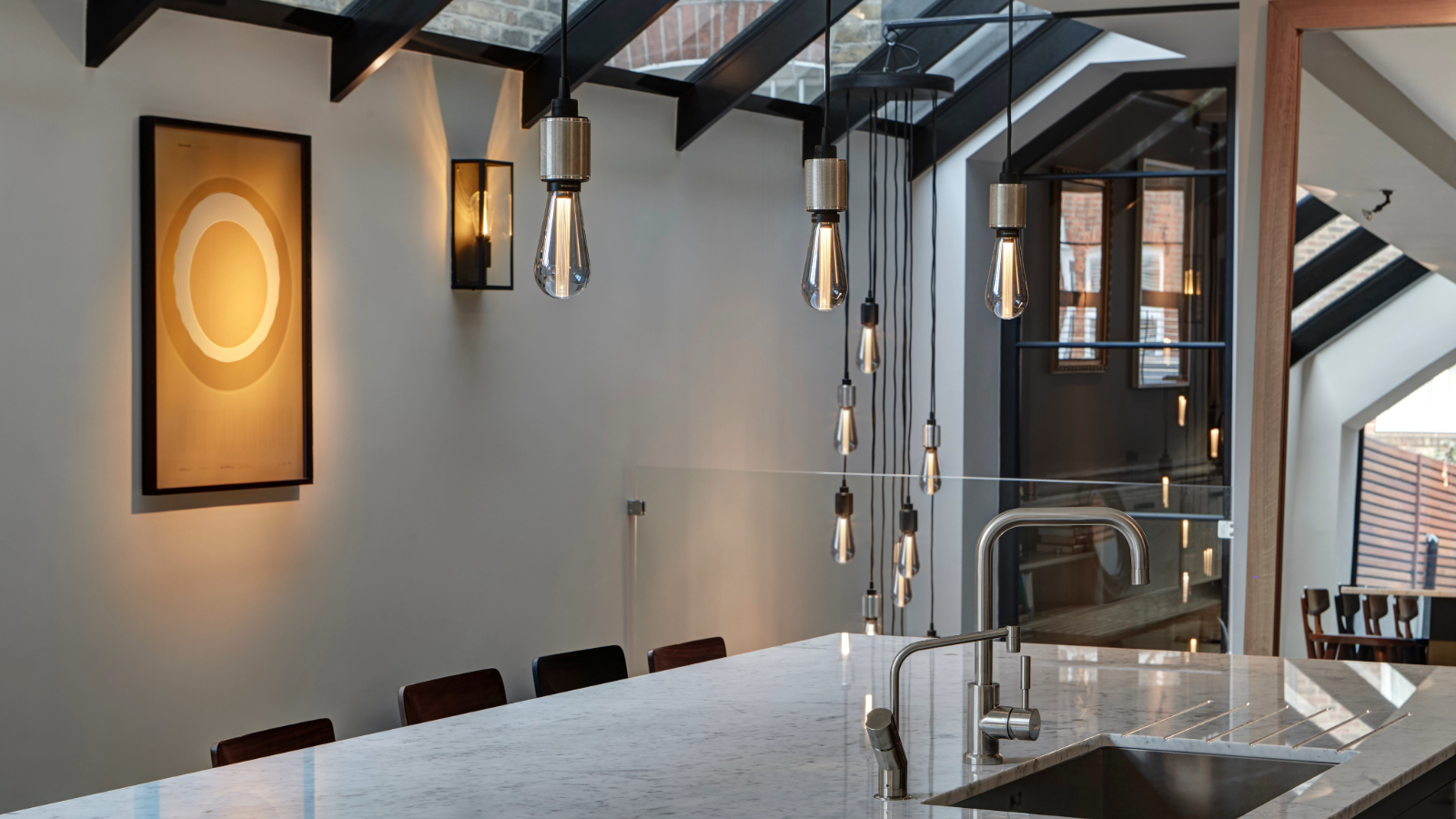Glass extension ideas to suit every style of house
Glass extension ideas are the perfect way to create a connection between the inside of your house and your garden. They are not only for contemporary homes either – as our collection of all the latest styles and projects around shows
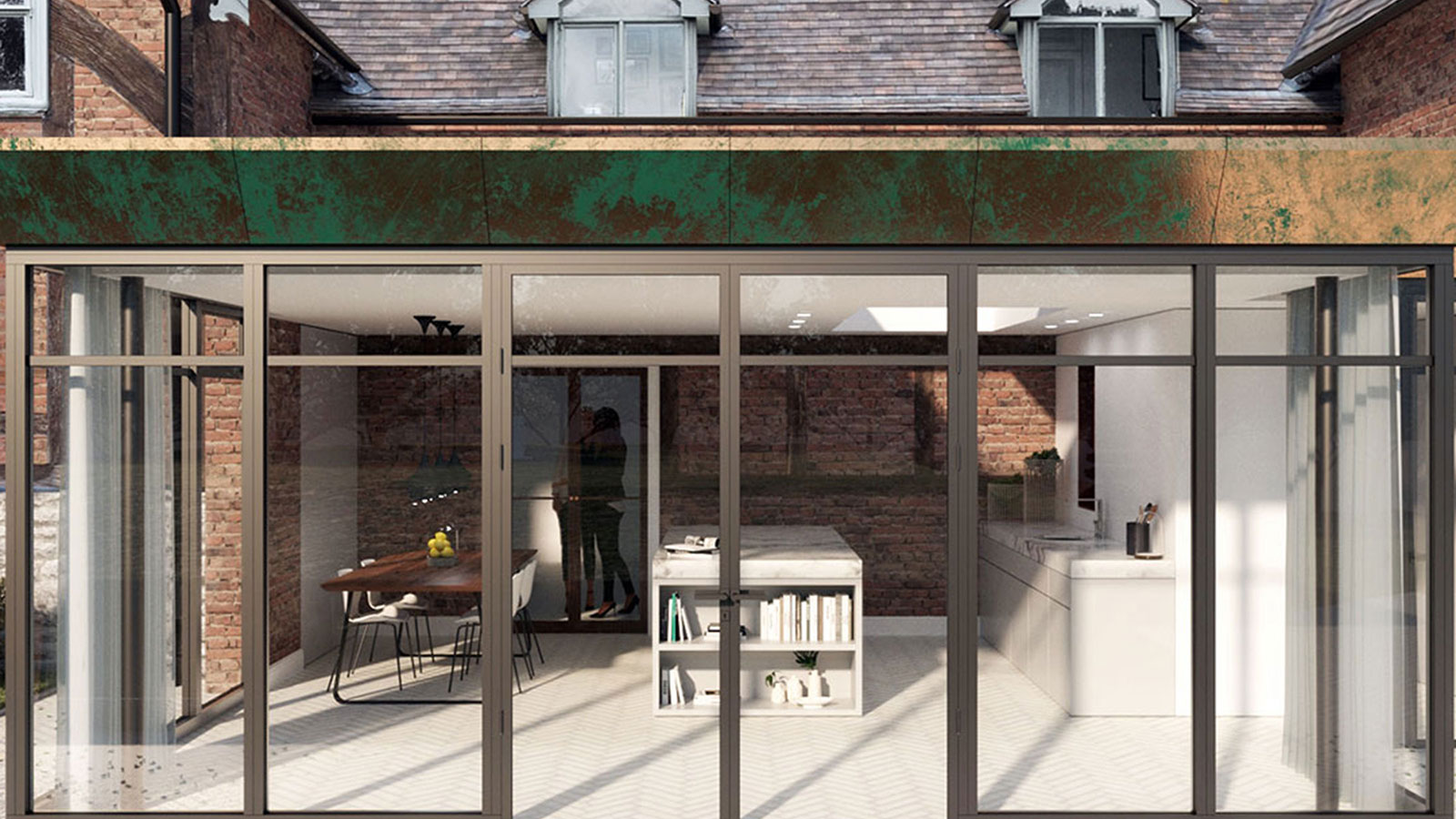
Glass extensions come in all kinds of shapes, sizes and designs, making them hugely popular with homeowners of all types of houses – they are just as suitable for adding a modern twist to a period cottage as they are maximising space and light in a newer terrace or semi.
If you are in the early stages of building an extension, you might like to bear in mind that a glazed addition will not only add value to your home, but it will also help to create a connection between the interior living space and the garden.
Long gone are the days when a flimsy uPVC conservatory was the only way to achieve a room with a view outside – thanks to the developments in structural glazing, entire glass rooms can be created as solutions to dark and cramped layouts.
No matter if your project is a frameless glass box extension or a small lean-to with a glazed roof, we've got loads of ideas and advice from project architects and glazing industry experts to provide a stepping stone to help you achieve a light-filled home.
What is a glass extension?
The terms 'glass extension' or 'glass box extension' tend to refer to a specific type of home addition which is predominantly glazed. They are more structurally sound than traditional conservatories and many sunroom ideas, hence their increasing popularity.
"A ‘glass box’, has almost no sense of materiality at all," explains Lydia Robinson, founder of Design Storey. "These types of extensions are successful in lots of different contexts and are often a favoured approach to extending a listed building as they minimise visual impact on the original building."
1. Create an indoor-outdoor kitchen
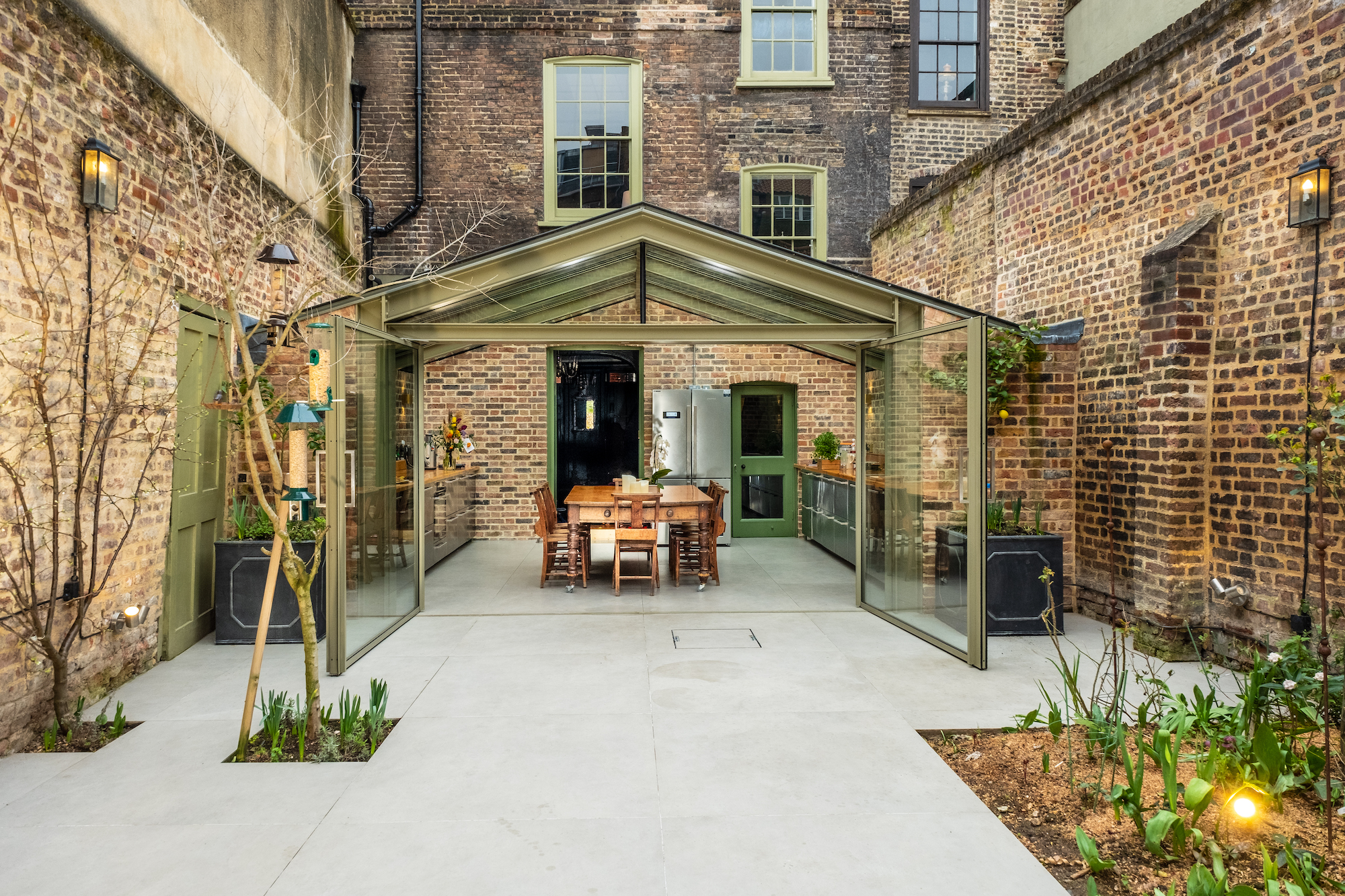
Kitchens are the hub of every home, and creating a more social cooking-eating-relaxing space, filled with light, is the motivation behind the majority of extension projects.
Bring your dream home to life with expert advice, how to guides and design inspiration. Sign up for our newsletter and get two free tickets to a Homebuilding & Renovating Show near you.
A glazed kitchen extension has completely transformed this terraced home. The original structure and charm of the building shines through, while the new kitchen-diner is completely open to the courtyard garden.
The key to this design by IQ Glass is the running motifs throughout the space. From the green doors and powder-coated steel frames to the flooring that continues into the outdoor space.
2. Replace an old conservatory with a modern alternative
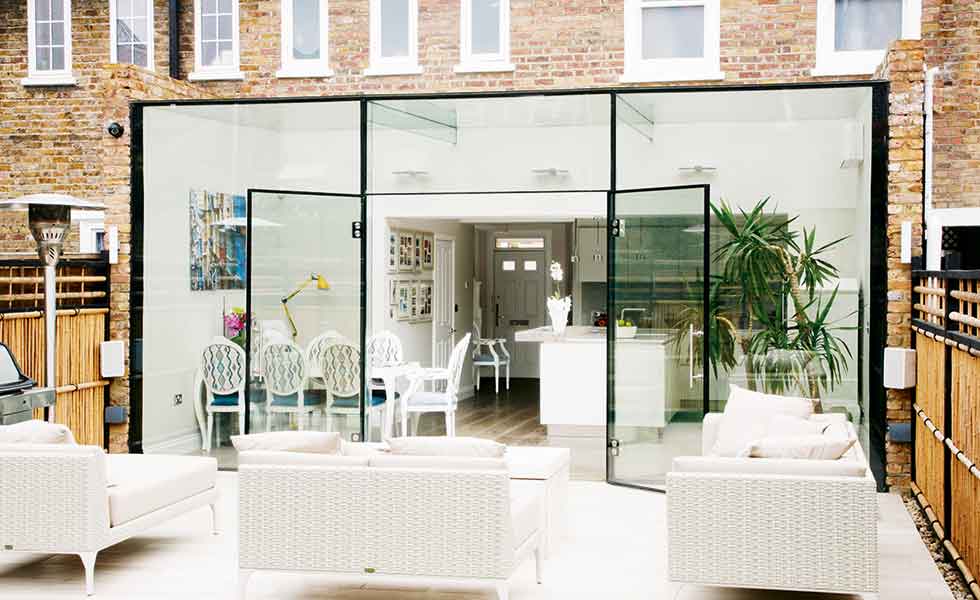
There is no reason to replace an old conservatory with a solid extension – instead, keep that connection with the garden and create a new glass-heavy structure instead.
In order to create a spacious open plan living layout in this family home in Notting Hill, the old conservatory on the ground floor was knocked down and replaced with a glass box by Raven Glaze.
The rear extension idea was made possible through a steel beam across the back which has allowed the space to be completely open to the rest of the ground floor — offering a through-view straight to the garden from the front door.
The new glazed addition, complete with full-height glazing as well as a glass ceiling, allows the family to enjoy uninterrupted views of the garden from the kitchen.
3. Use glass to fill in a side return

Side return extensions are a popular way of making the most of a terrace house without encroaching too much onto the limited garden space. Opting to extend in this way using glass as the main material allows natural light to penetrate deeper into the floorplan.
"We chose an all glass side return as the extension was added to the lower ground floor of the house, which had a somewhat subterranean feel as it was set quite far below the garden level," explains founder of YARD Architects, Simon Graham.
"Having a glass side return opened the house to the garden and allowed expansive view of the sky, allowing the house to reconnect with the outside. Architecturally, a glass extension creates a very lightweight addition and works really well against older buildings such as this one, which was in a Conservation Area.
"We wanted the extension to have as little framing as possible, hence the pivot door which acts as a picture window and the glass roof with large panels and a very slender steel support in the middle."

Simon founded YARD Architects with Jonathan Duffett in 2014, having gained extensive experience leading award winning residential developments at previous practices across London.
Simon is a mid-century modern architecture buff, and is painstakingly renovating his classic 1960’s townhouse one detail at a time.
4. Don't assume that bigger is always better
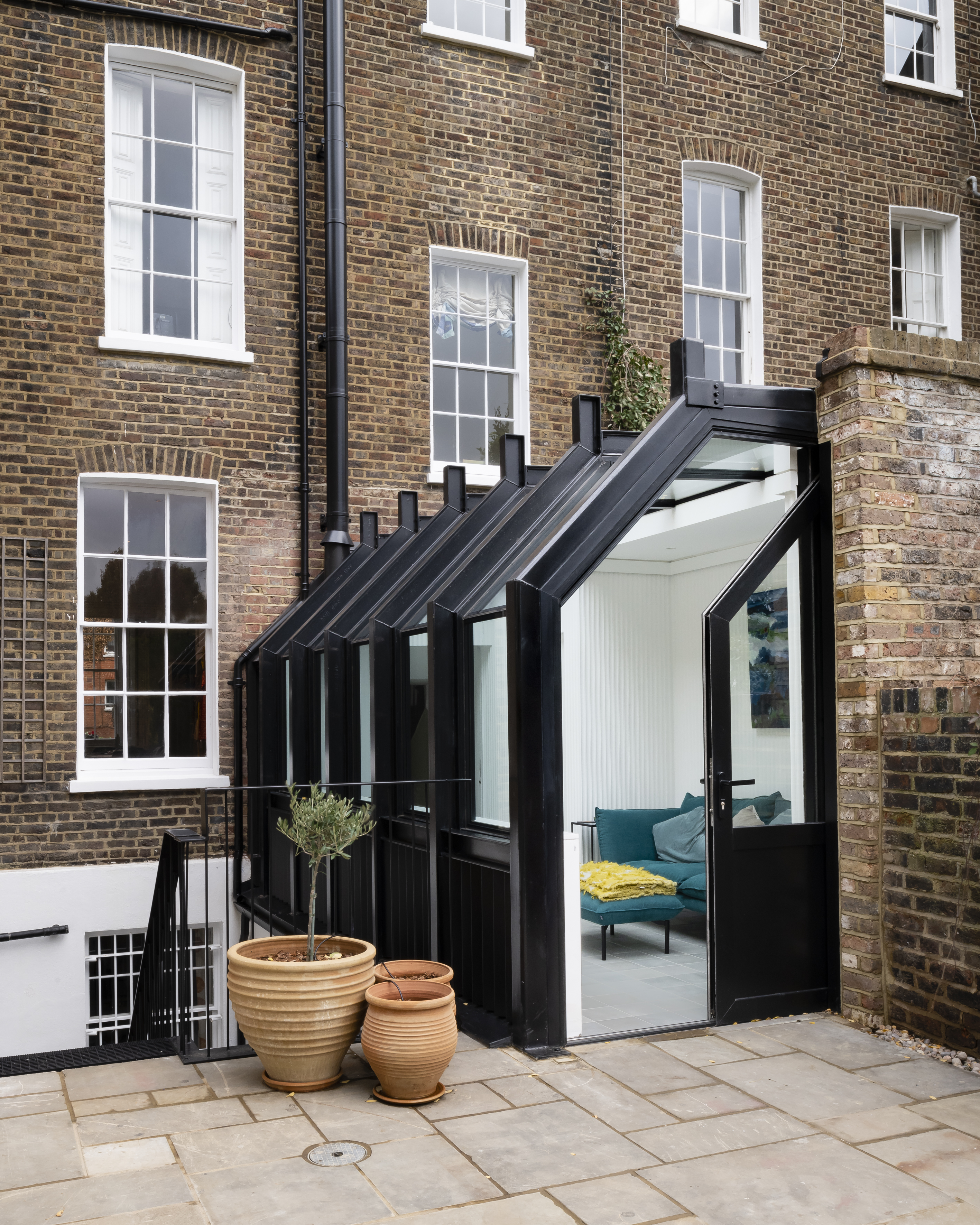
The beauty of glass extensions is that they don't need to be large in stature to make a big impact on a property. Reimagining a Georgian 'glasshouse', CAN Architecture chose to build this small lean to (just 12m2) using a glass structure supported by external steel fins.
Attention to detail is crucial for small house extension ideas to work well. In this instance, the patio door slides away into a pocket created within the adjacent 100-year-old brick wall.
"The visual connection of the garden and sky in the same view (unobstructed by solid walls and roofs) really makes you feel like you are in the garden without the weather!" says Mat Barnes, director at CAN.
5. Let a listed property shine with a glazed extension
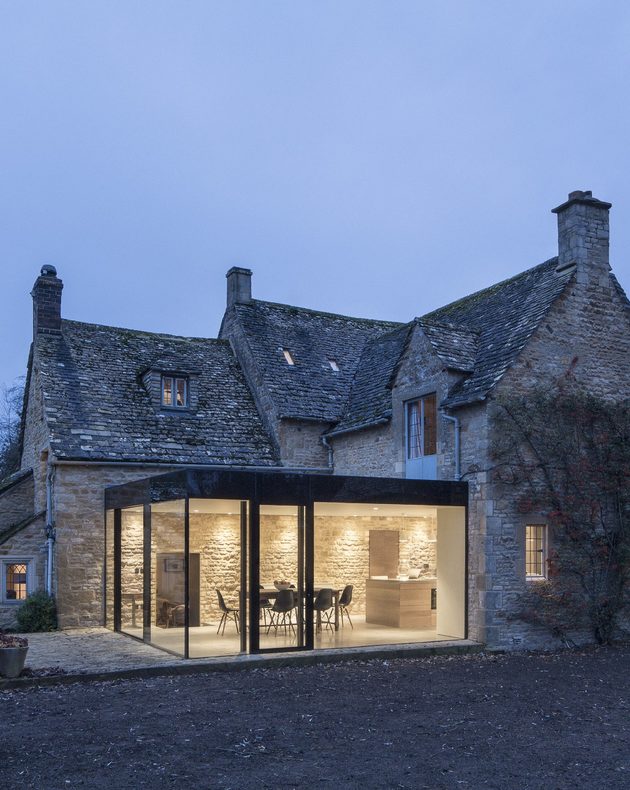
In a normal house extension ideas, one of the predominant rules is to avoid 'bolt-on' designs that feel separate to the existing home. However, with a glazed extension allowing the old exterior walls to be exposed (as here) is a captivating and light-touch approach.
Plus, it often one that planners like to see when extending a listed property so as to demarcate the new addition clearly from the history house.
This contemporary kitchen-dining area was created thanks to a seamless glass box design by Eastabrook Architects (supplied by IQ Glass for £34,000) to this listed cottage.
The success of the new extension is thanks to the slim sightlines of the aluminium windows which ensure the room features uninterrupted views out, while the original stone walls of the house are retained.
6. Don't be afraid to go up two storeys with a glass extension
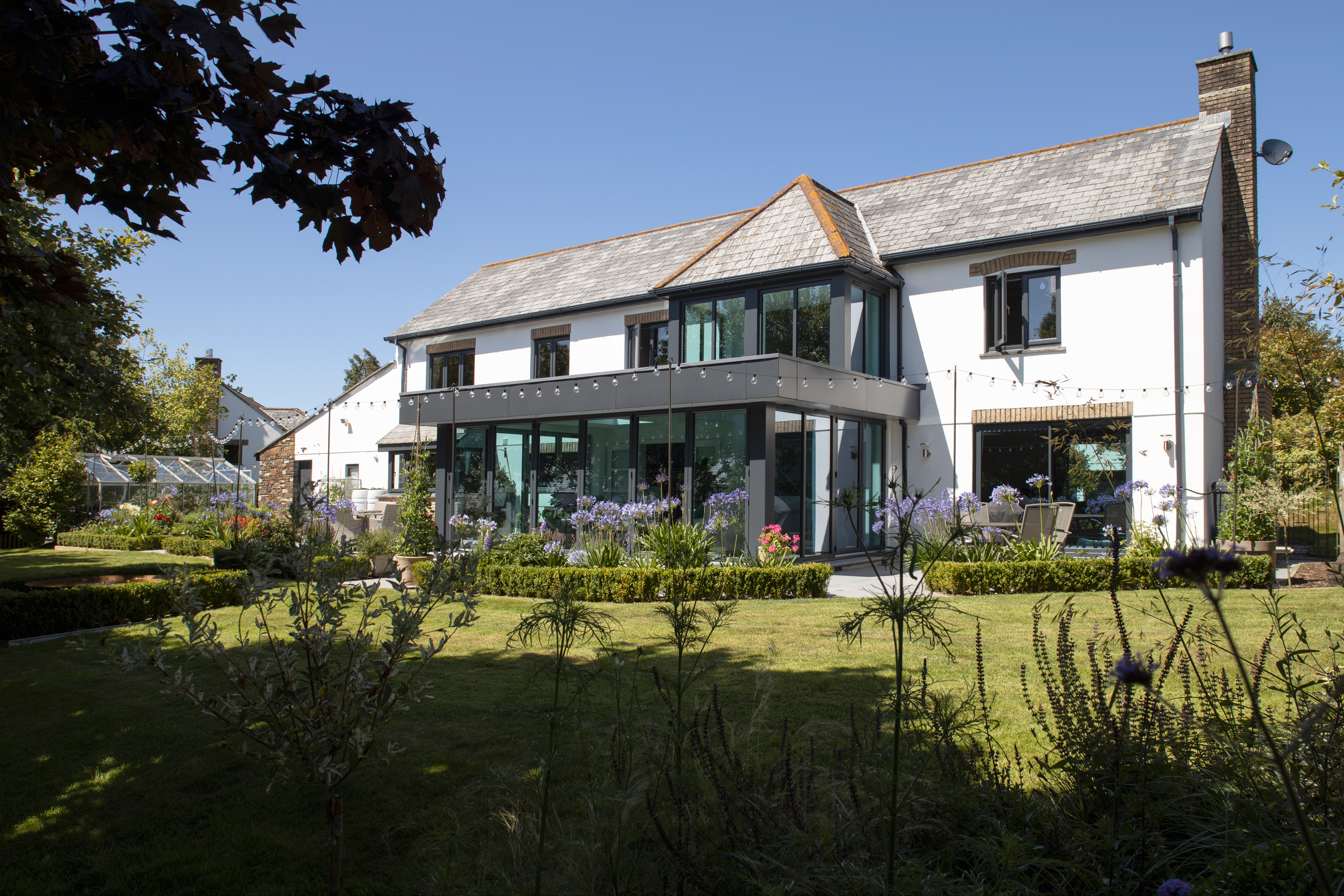
Glass extensions are most often seen in on a single level but consider letting the effects of a light new space impact the whole house.
Double storey extensions can be more cost-effective and will make every rooms feel like they have been refreshed.
In order to introduce indoor/outdoor living into their 1980s home, Daniel and Elizabeth McKenzie extended into their garden, utilising bifolding doors the length of the room.
A double-height atrium punctuates the new space and fills the first floor mezzanine with light. Cautious of overheating with such large amounts of glazing, the homeowners specified a solar reflective coating on their aluminium windows.
7. Open up a semi-detached home with frameless glass
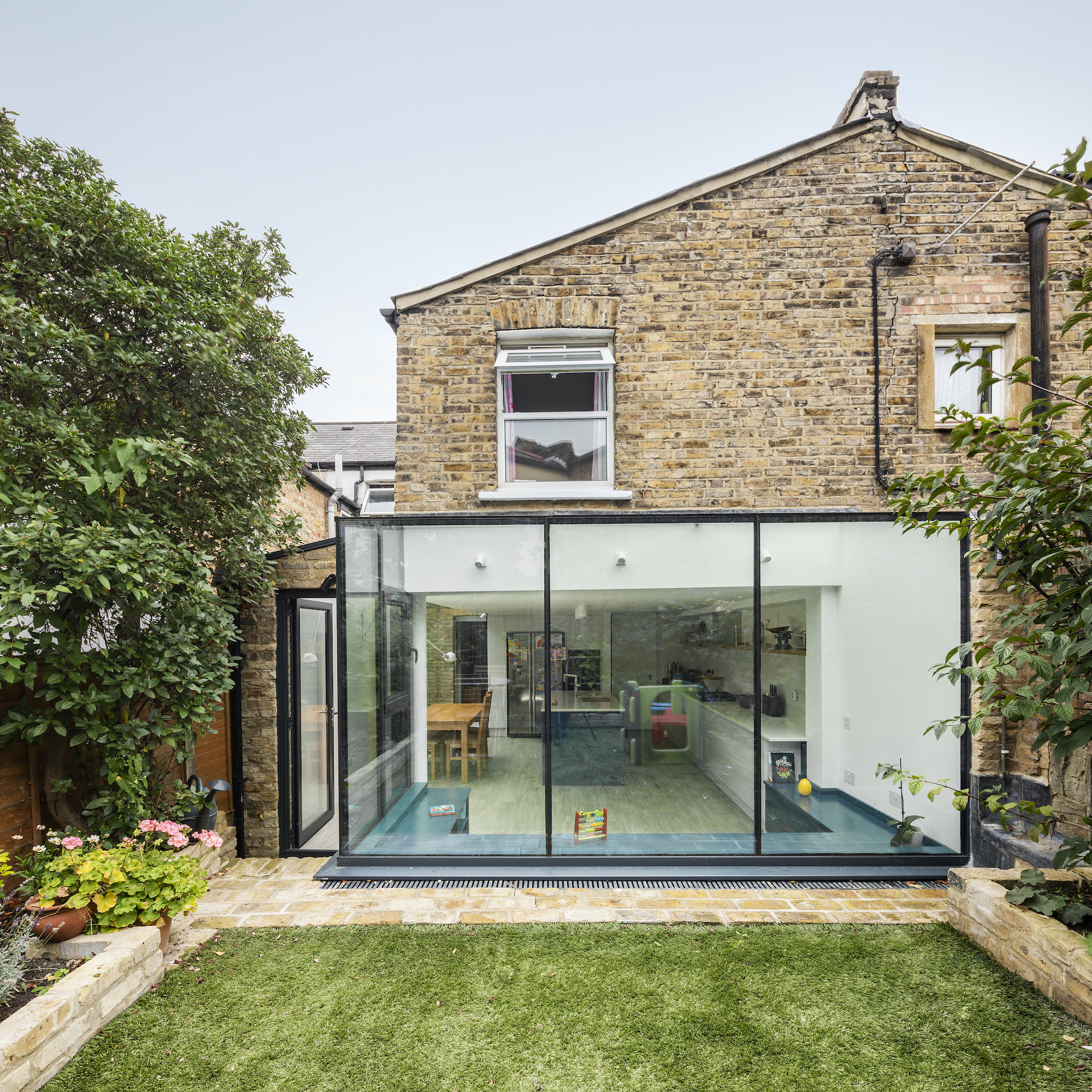
While semi-detached house extensions at the back can often make the rest of the house feel glum or unloved, introducing glazing into the design will perk up the entire floorplan.
"The less structure there is the cleaner and more open the glass extension will feel," advises YARD Architects' Simon Graham. "However, as glass panels become larger they need support, that could be with timber or steel or even glass fins and these will need to be carefully considered by a structural engineer or specialist glass supplier."
Here, a frameless glass box (designed by Unagru Architecture) means the existing low ceiling of the house is opened up.
8. Unite old and new using a glass link
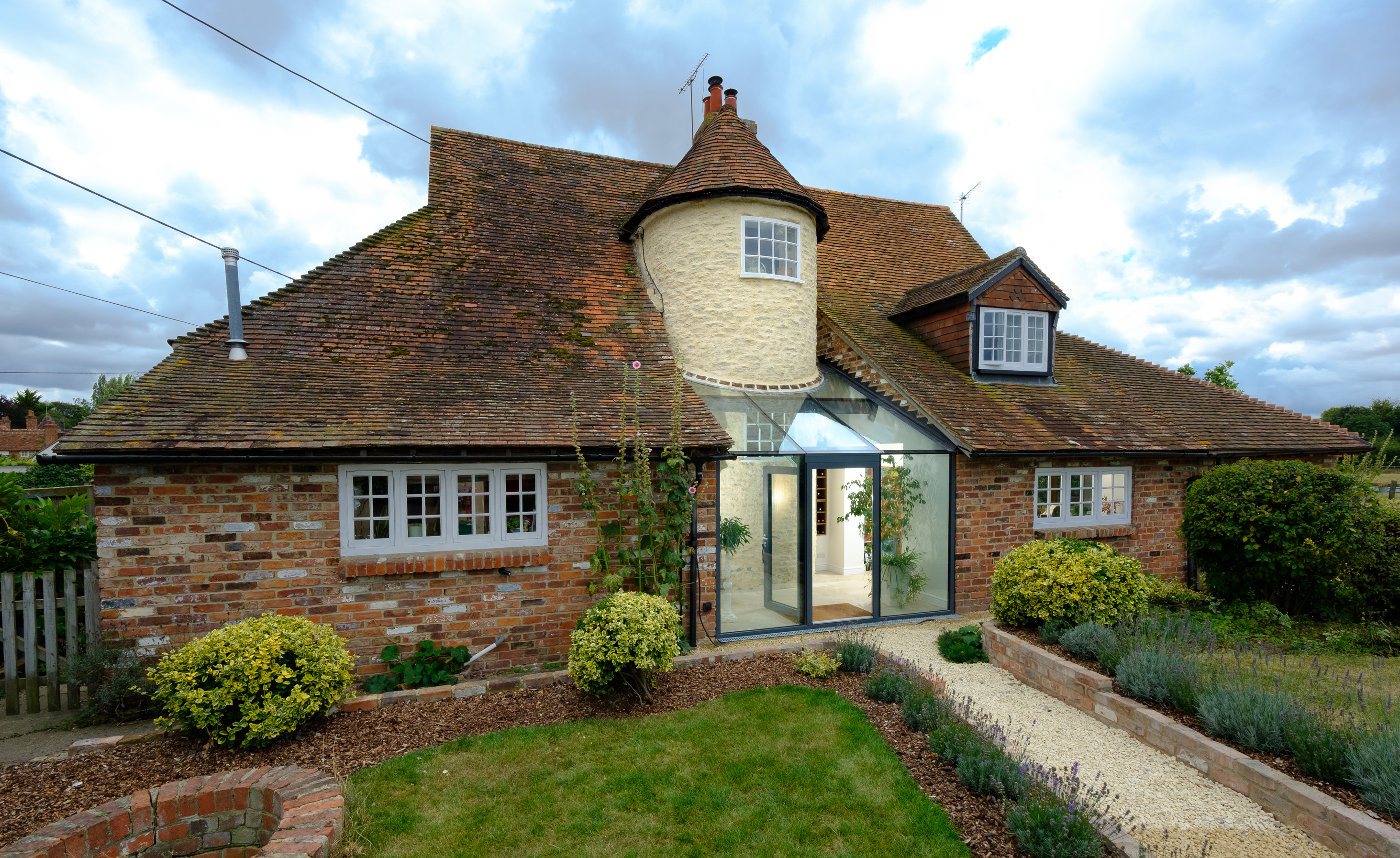
"Glass link extensions are a great way to connect two buildings together," says Darren Bray, founder of Studio B.A.D. "To get a glazed link right you need to consider how it will be installed. The best solutions, visually, are those that allow you to conceal the link’s supporting frame so that the glass appears to be the only thin present."
This glass box extension celebrates the Grade II-listed original building, seamlessly blending the structures dating from the 15th, 16th and 17th centuries with a contemporary style.
The pitched roof was designed to emphasise the circular stair turret while the use of glazing means the existing brick exterior is still visible.
9. Craft an eye-catching frameless glass box porch
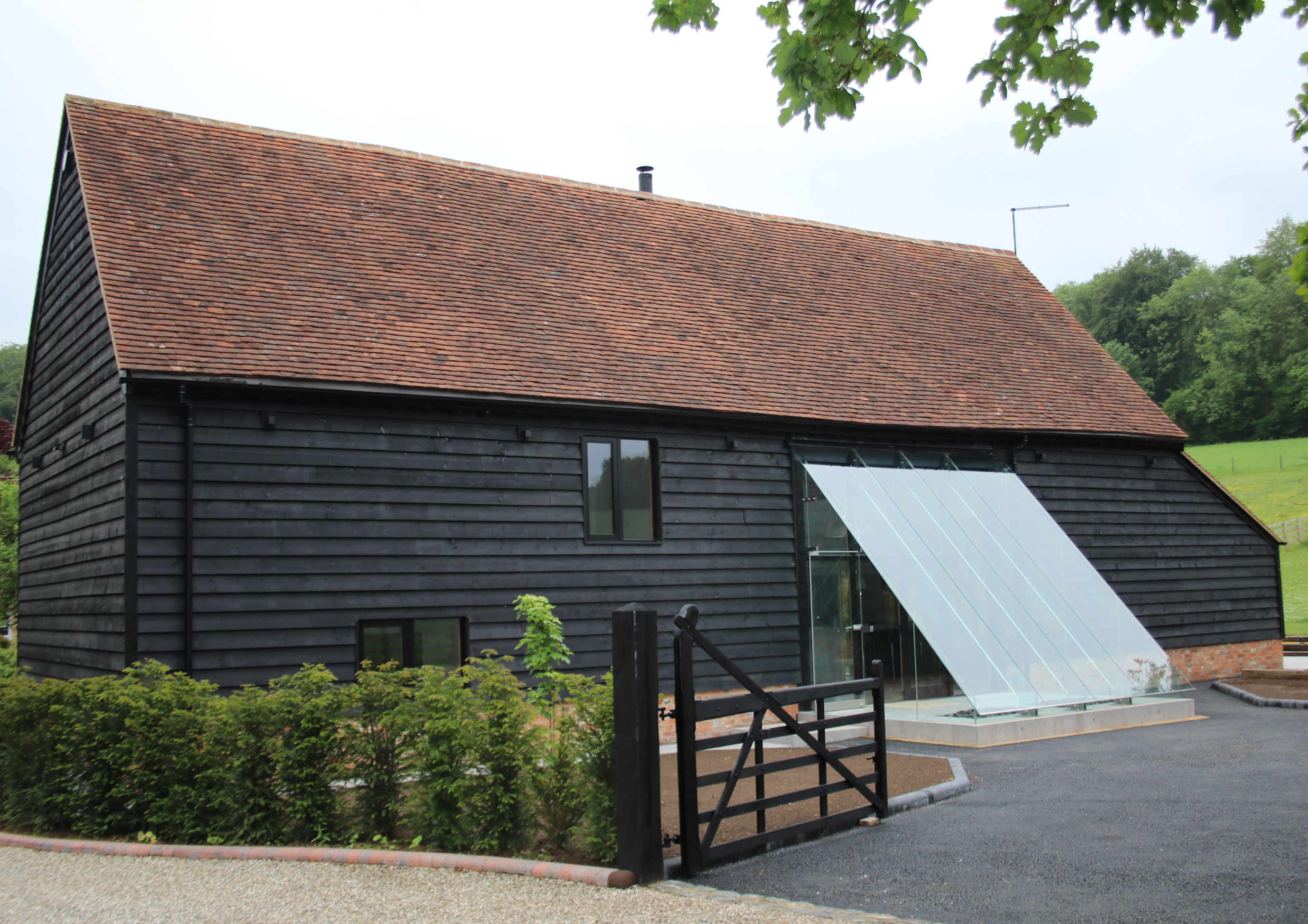
An entirely underrated modern extension idea, building a porch using glass allows light to instantly influence a guest's perception of a house — as well as providing a sheltered place to take off boots, coats and bags.
This stunning structural glass box porch, provided by Ion Glass, adds wow-factor to the converted barn.
The structural beams and fins are held in place with minimal stainless steel brackets to create a deceptively simple appearance.
10. Keep a lid on costs with a smaller glass design
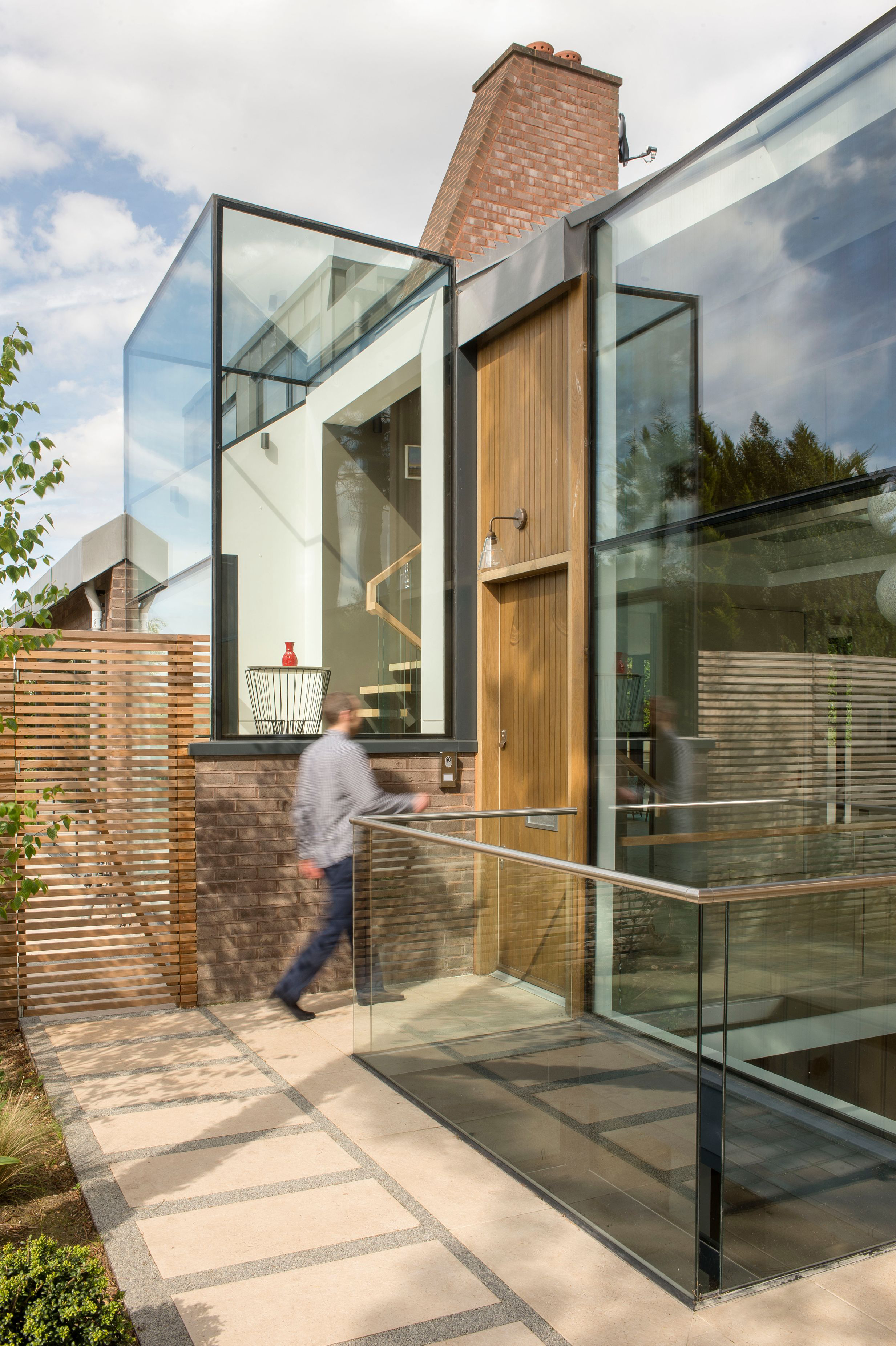
Bigger is not always better – as this small glass box extension by Syte Architects demonstrates. A larger extension will ultimately require more structural calculations, and therefore carry higher glass extension costs. In order to make the most of the garden views, Syte Architects built the structural glass box (£16,000 from Cantifix) on a brick platform, giving the project a unique look.
"Extensions where the majority of the walls and roof are constructed from glass are a lot more sensitive to the orientation of the extension," warns Mat Barns of CAN. "If they are orientated south then there is a danger of too much solar gain and overheating issues. Constructionally, they also need to be a lot more accurate than a block or brick construction and specialist glass designers are often needed."
Before adding a glass extension, be sure to find out how to prevent overheating in homes.

Prior to founding CAN, Mat was an Associate at Studio 54 Architecture where he was responsible for the award-winning Peabody infill housing projects delivered through the Small Projects Panel. He is a former member of STORE, a teaching and arts collective and has delivered lectures on CAN's work across Europe. He consolidated his various creative practices to form CAN in 2016.
11. Mirror a multi-storey house with a tall extension
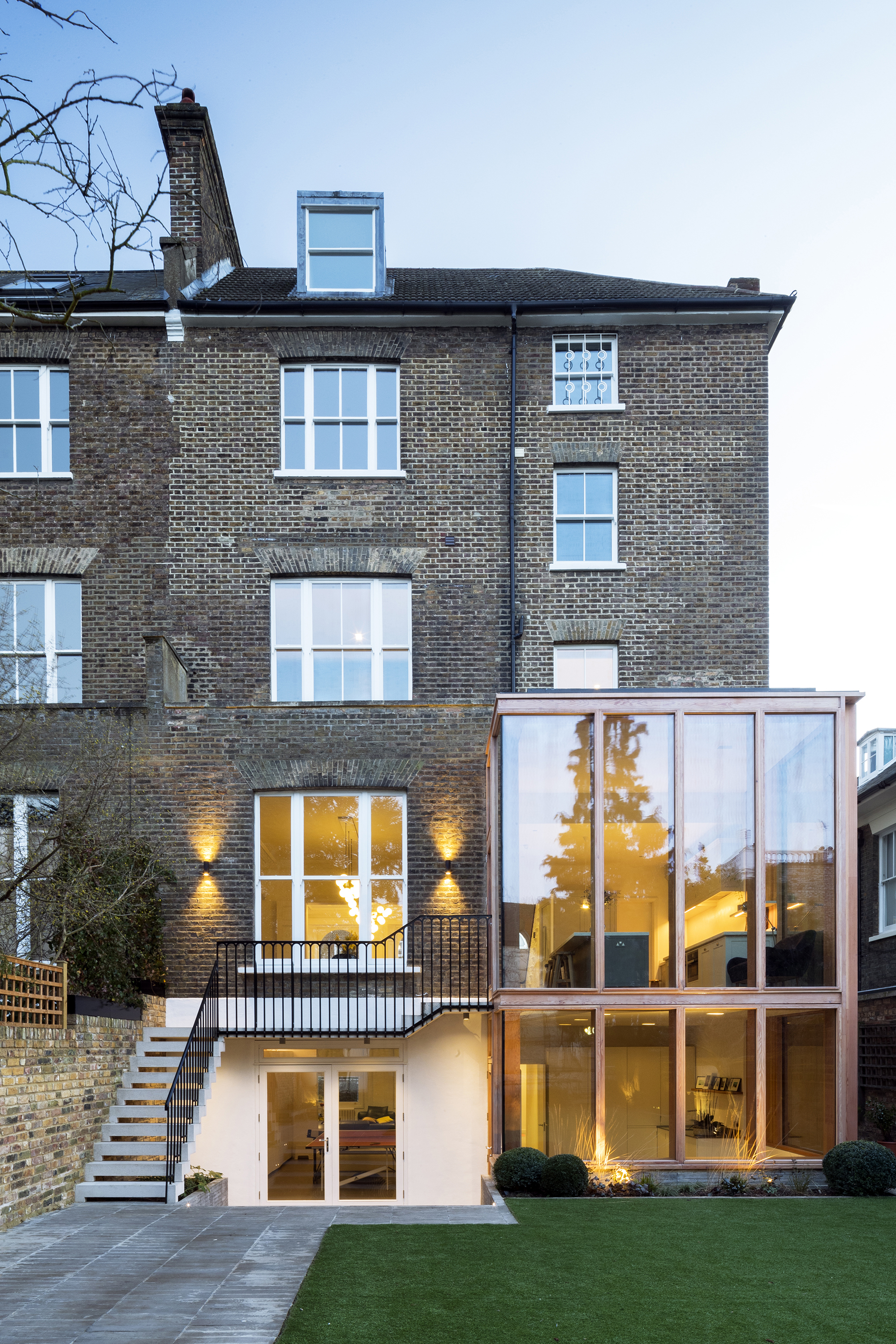
In a contemporary take on a traditional bay window, Blee Halligan Architects added a double-height glass box extension to this Georgian villa.
The frameless corner glazing allows the morning light to infiltrate the previously dark and disjointed layout, while timber 'privacy fins' reduce overlooking from the neighbours.
The result means the basement to the lower ground floor is now filled with light and that the extension is a charming, modern addition in keeping with the existing house.
12. Seamlessly connect two buildings with glass
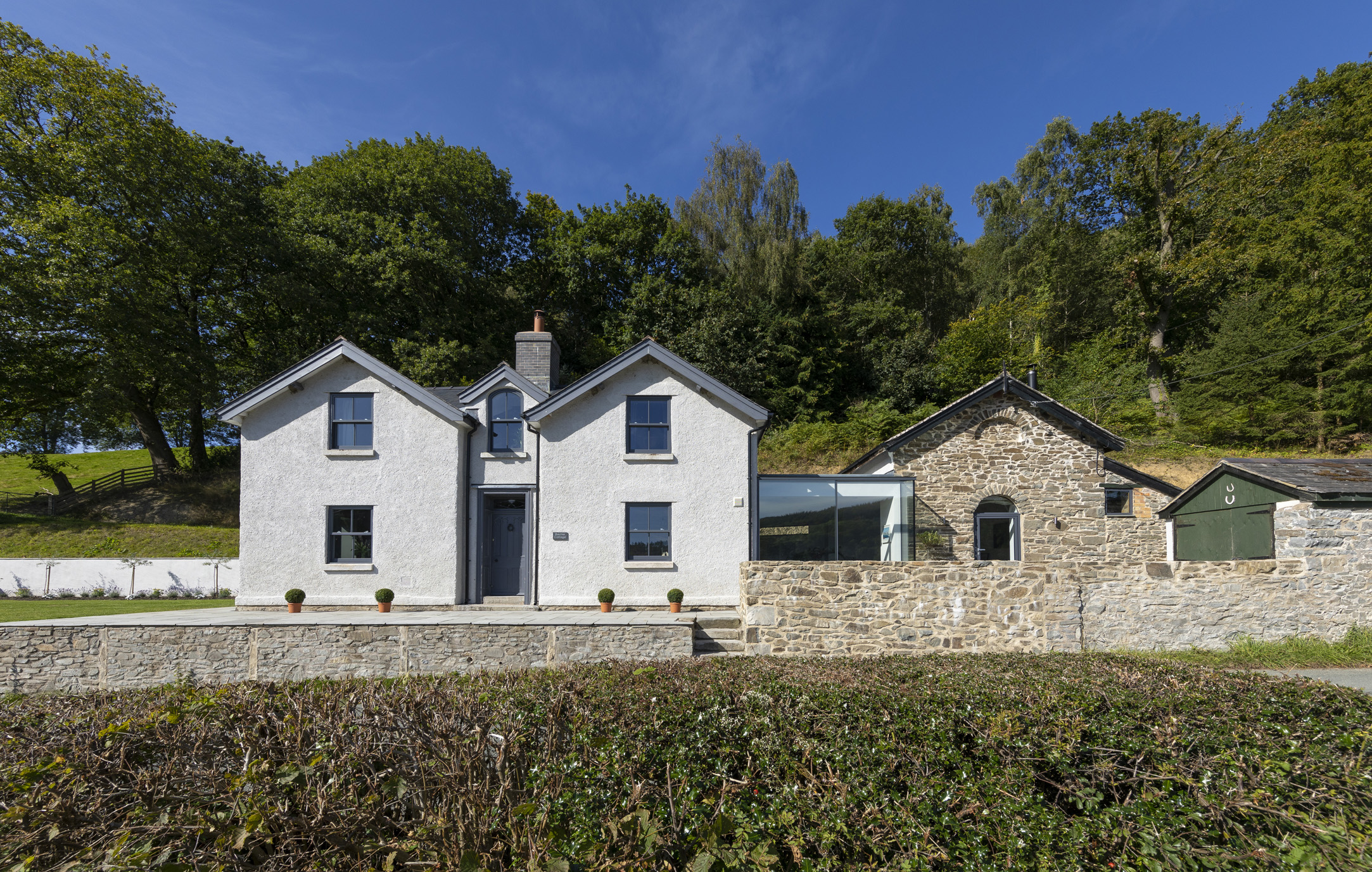
Glass can often be looked on favourably when joining together two separate structural volumes. It's invisibility allows a minimalism which will prevent visual over-stimulation and provides an elegance that will stand against rural or agricultural properties.
Cottage extensions can really benefit. While renovating their cottage in Powys and converting the derelict granary barn which sat adjacent, Amy and Bryn Jones added a large glazed link between the two buildings.
The large-format sliding glass door enables the newly remodelled kitchen, dining and living spaces to make the most of the countryside views opposite.
13. Mirror a glass extension with a small glazed porch
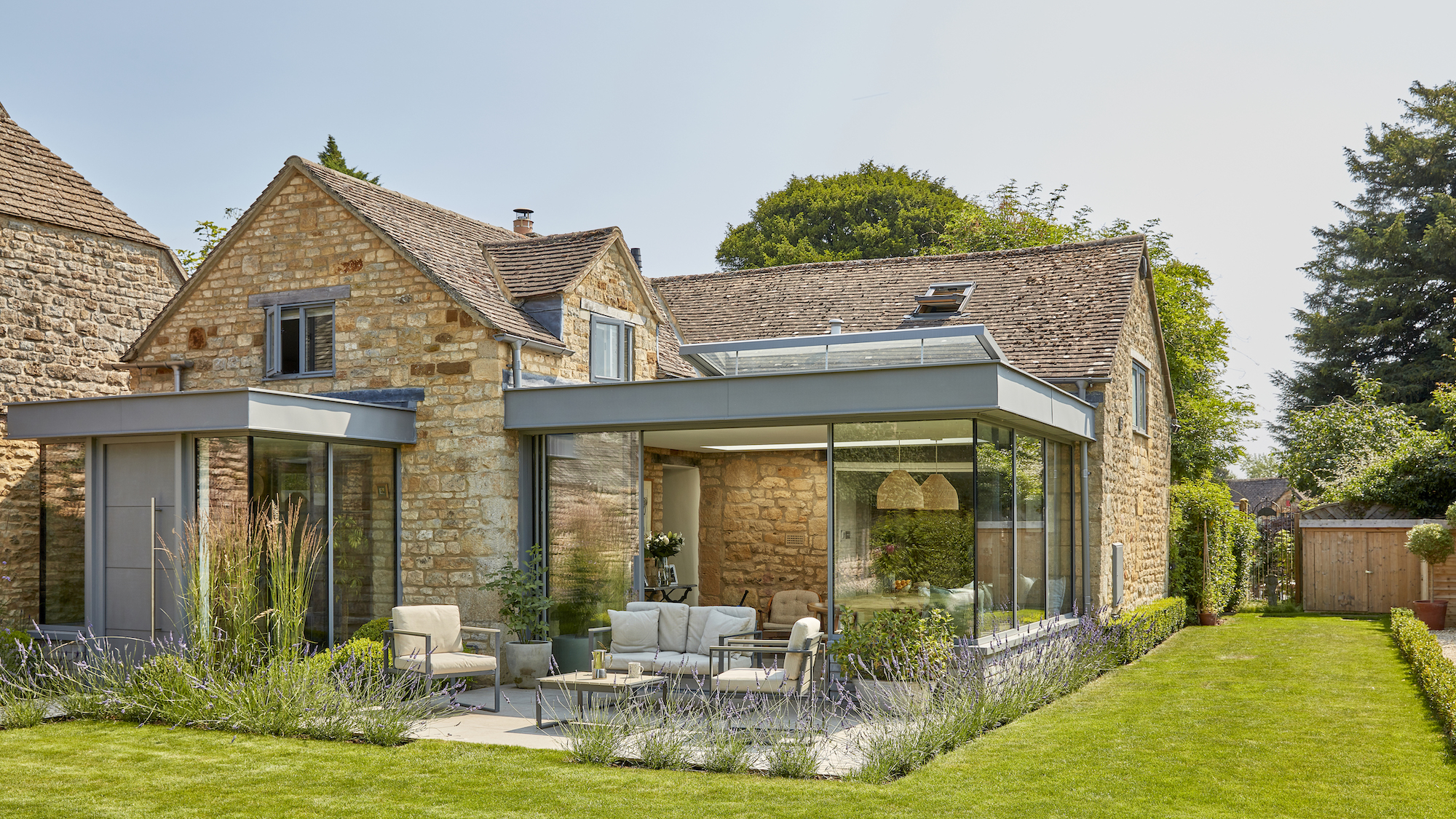
When applying for planning permission to extend his Cotswolds coach house cottage, Sam Irvine found the planning department looked more favourably on a style which contrasted entirely to the old stone.
Working with Lydia Robinson and Lawrence Grigg of Design Storey, Sam was able to add not one, but two glass box extensions to the property. The first, a small, but endlessly useful porch area (complete with bespoke storage seating) and the second, a contemporary kitchen-dining space bursting with natural light.
This project is a also good example of how an existing building can provide lateral stability to keep the size of the steel down. The column is very slim and is actually in front of the mullion of the window, on the left-hand side of the house.
The porch is also supported either side of the front door and encased in matching zinc to camouflage the supports.
14. Conjure up a sense of being outside with a glass roof
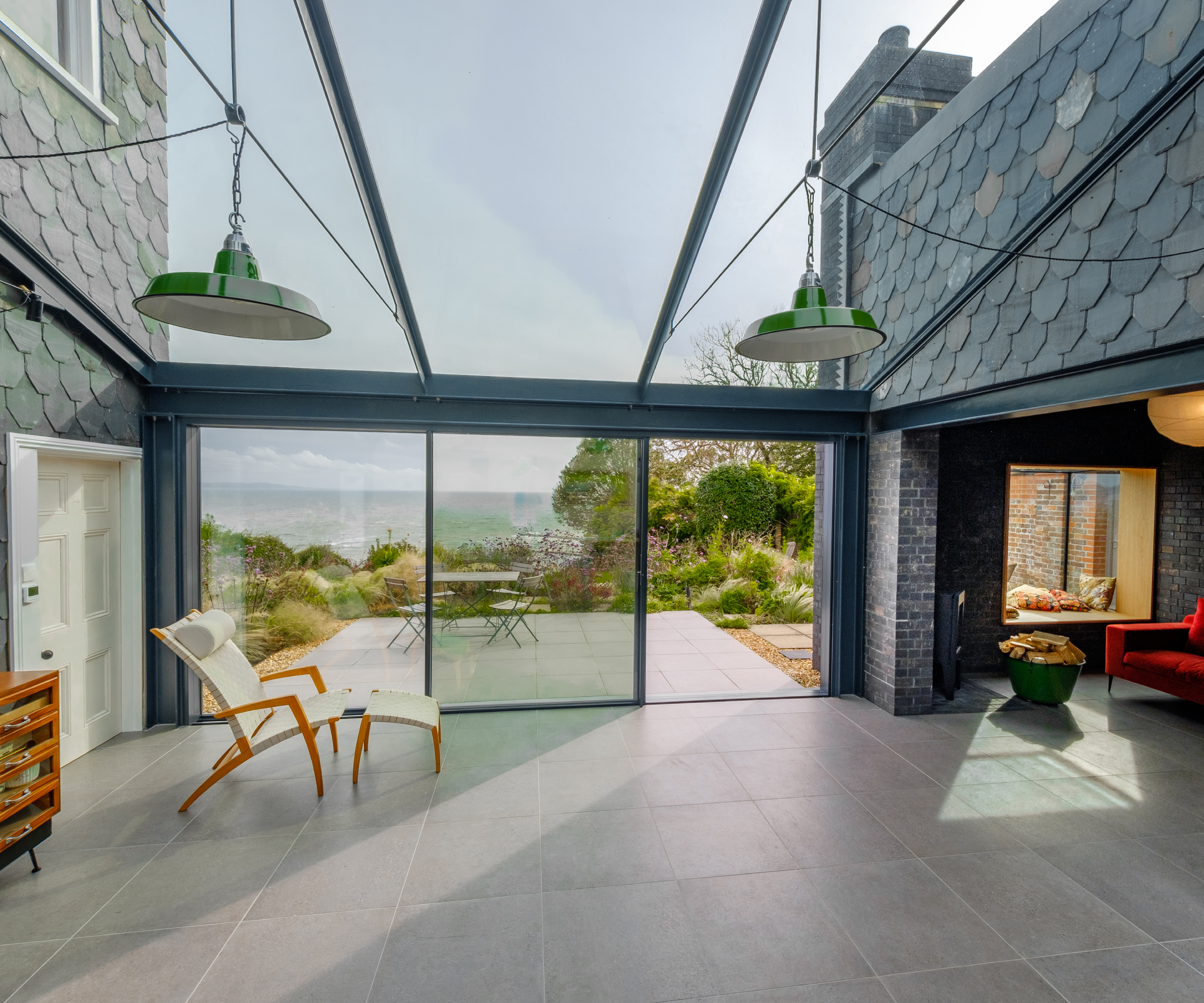
Extensions with glass roofs have long been recognised as a brilliant way to flood a space with light and create a feeling of being connected to outdoors – but when you combine a frameless glass roof with walls to match, the effect can be breathtaking.
This frameless glass link not only connects two sections of this coastal property, but it also acts as an additional living space from which to enjoy far-reaching views of the ocean.
15. Locate a dining space in a minimalist glass box
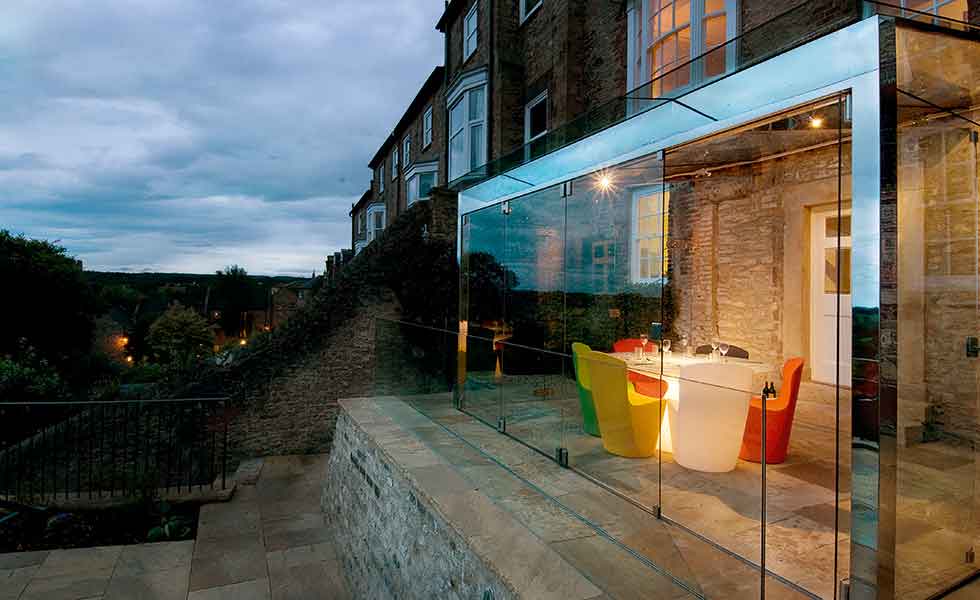
This project from Jeff Kahane + Associates evolved from the homeowners’ desire to replace their semi-derelict conservatory with the most minimal new structure possible, creating a new dining area off the rear elevation of their Grade II-listed Georgian house.
“This new frameless take on modern conservatory ideas, seated on a battered stone plinth and guarded by a glass balustrade, is designed so that 73% of its sides can be folded open on warm days. Glass specialists Trombe, working with us, developed a new 180° hinge to achieve this,” explains Jeff Kahane.
A slender portal frame is braced back to the rear of the building by two beams, holding eight adjustable spotlights — solving the perennial problem of how to illuminate a fully glazed space. The beams and frame are clad in mirror-polished stainless steel that, in sunlight, further helps to minimise the impact of the new space.
16. Build a feat of engineering with a glass extension
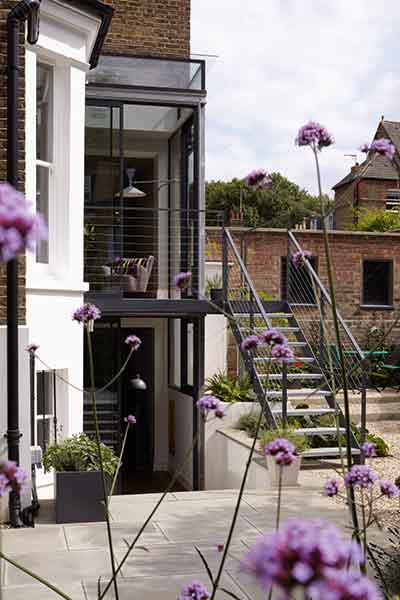
While many glass extensions are built solely on the ground floor, Giles Pike Architects has achieved an impressive feat of engineering by introducing a two-storey glass addition to a 19th-century five-storey home in Fulham.
Designed to open up the living accommodation over several floors, the structural walls were removed and replaced with a network of steel beams and stub columns to support the new floor area at each level.
Full-height glazing, glass sliding patio doors and a glass roof complete with minimal framing offer uninterrupted views of the garden while bringing in plenty of light. A sleek steel balcony and external open tread staircase also connects the upper living accommodation to the garden.
17. Consider the glass colour carefully
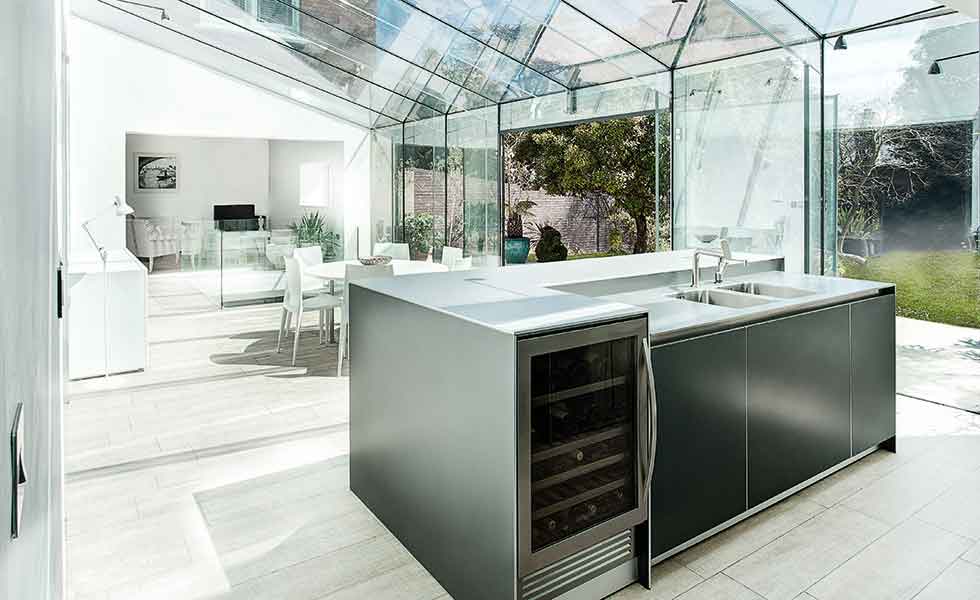
Peter and Alison Dudgeon’s desire to inject light into their period property led them to approach architects AR Design Studio — well known for their work with glass.
Director of the practice, Andy Ramus, designed a contemporary frameless glass extension which would open on to the rear garden to provide a flexible inside/outside space.
It is made from 12mm outer sheets of toughened glass and is supported by a structure of low-iron ‘white glass’ which does not give off the green tinge of thick glass, making it less prominent.
To prevent the extension overheating in summer months, the glass is coated with solar-controlling titanium dioxide which reduces the amount of heat entering the building by 59%, while large glass doors provide natural ventilation.
18. Use a chimney to break up a glazed addition

Divided by a stone chimney stack to tie the extension in with the existing stone farmhouse, this glazed addition marries old with new.
Designed by van Ellen + Sheryn Architects, the glass box extension houses a new open plan kitchen/living/dining space and, thanks to the full-height glazing, the homeowners now benefit from views out over the garden.
Sliding glass doors and a level threshold also promote indoor/outdoor living.
FAQs
Do glass box extensions need foundations?
"Yes glass box extensions require foundations, this is usually concrete slab or similar," says Carly Coren, marketing executive from IQ Glass.
Your architect, structural engineer or specialist glass supplier should be able to assist in advising what structural supports a glass box will require below ground.
Are glass extensions more expensive than brick?
"A glass extension is likely to be much more expensive than a conventional brick extension," explains Simon Graham. "The cost will be dependant on the complexity of the design and the specification of the glass; does it need to have specialist coatings to restrict heat gain or be easy to clean? How will the glass be put in place, will a small crane be needed or can it be lifted by hand if the panes are small enough?"
"There is no average cost of a glass box extension as they are engineered on a completely bespoke basis and there are many factors that impact the price, including opening elements and structural support," continues Carly Coren from IQ Glass.
"As a rough guide we would say structural glazing and sliding glass doors systems are around £1,000 per metre squared."
Do I need building regulations for a glass extension?
Like any new extension, glass extensions will need to comply with Building Regulations.
There are some practical hurdles to overcome before building a glazed addition. Deputy Editor Michelle Guy warns: "Don't get caught out by the Building Regulations that states that the area of windows, roof windows and glazed doors mustn't account for more than 25% of the extension's floor area."
"The reasons for this restriction is simply down to thermal efficiency," continues chartered surveyor Ian Rock. "If you want large amounts of glazing, one solution is to demonstrate that the overall loss of your extension with the increased area of glass will be no worse than if you'd stuck to the 25% rule. This can be done by compensating with better insulated walls, roofs and floors, along with higher-perfomance glazing."
While glass extensions are undeniably beautiful, for those tentatively asking 'how much does an extension cost?' the answer when it comes to glass could well be off-putting. More common construction materials, such as masonry and timber frame, tend to come with lower build costs.
Amy is an interiors and renovation journalist. She is the former Assistant Editor of Homebuilding & Renovating, where she worked between 2018 and 2023. She has also been an editor for Independent Advisor, where she looked after homes content, including topics such as solar panels.
She has an interest in sustainable building methods and always has her eye on the latest design ideas. Amy has also interviewed countless self builders, renovators and extenders about their experiences.
She has renovated a mid-century home, together with her partner, on a DIY basis, undertaking tasks from fitting a kitchen to laying flooring. She is currently embarking on an energy-efficient overhaul of a 1800s cottage in Somerset.

